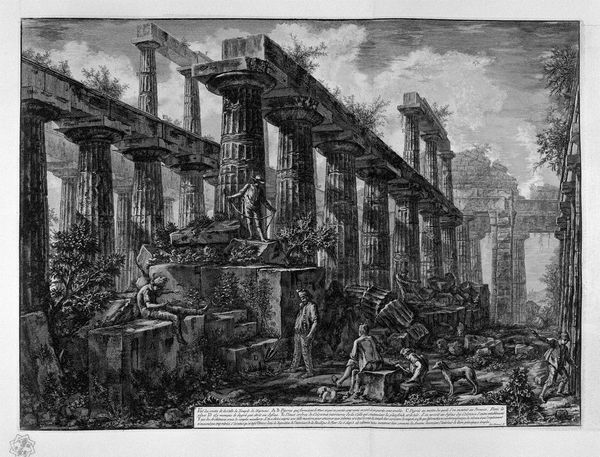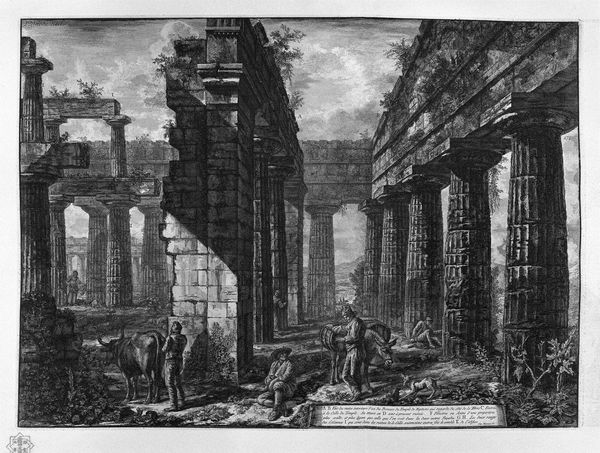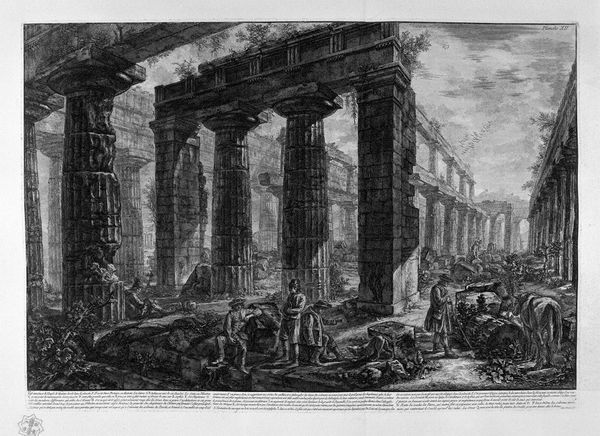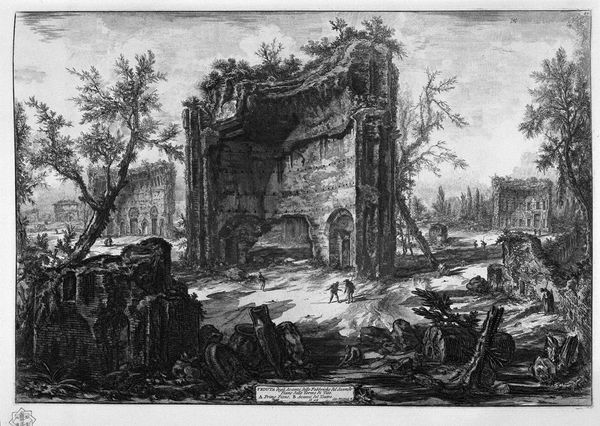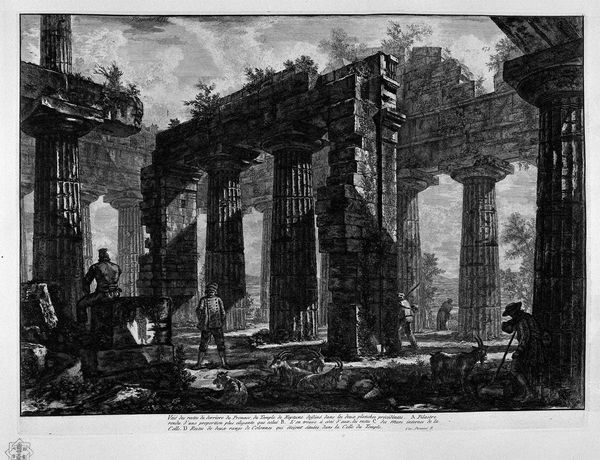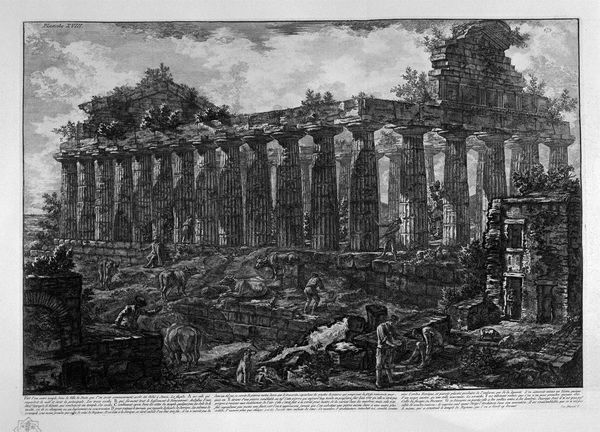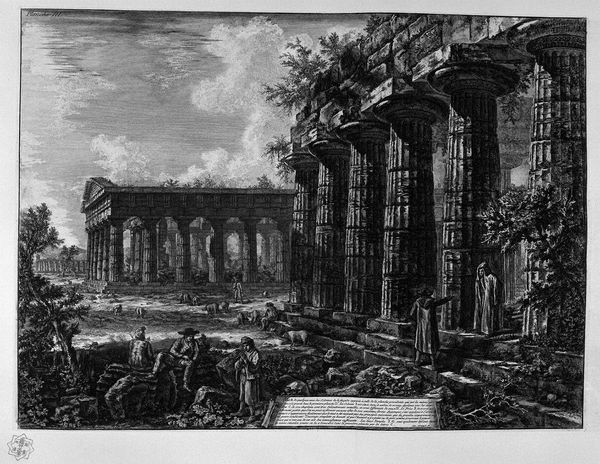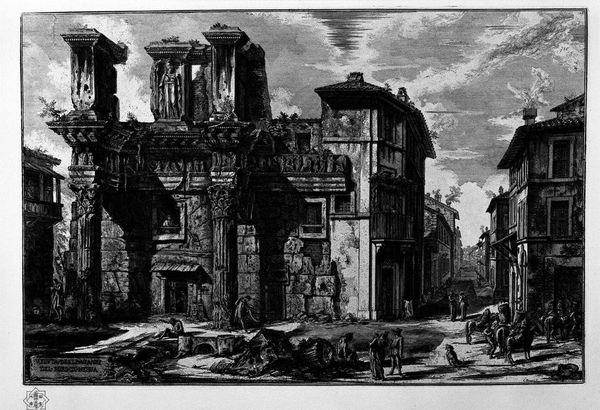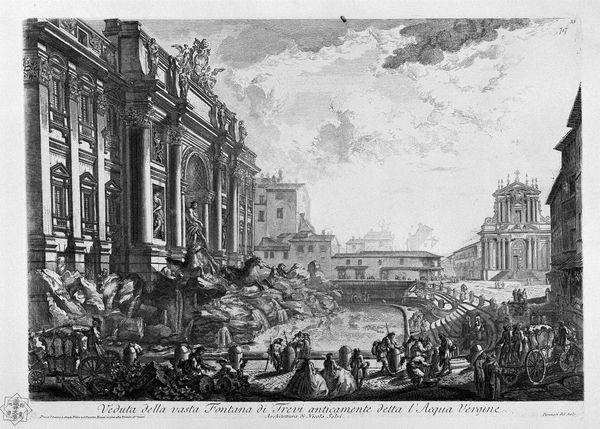
print, etching, engraving, architecture
# print
#
etching
#
pencil sketch
#
landscape
#
ancient-mediterranean
#
romanticism
#
engraving
#
architecture
Copyright: Public domain
Curator: This etching, "Remains of the Temple of the same cell," is by Giovanni Battista Piranesi. Editor: What a dramatically constructed scene! The deep blacks against the wispy greys immediately create this oppressive, melancholic atmosphere. Curator: Indeed. Piranesi was fascinated by Rome's ruins, and his works reflect a deep interest in the cyclical nature of civilization, how societies rise and then inevitably fall. You see that expressed, literally, in the architecture but also by introducing contemporary figures into a past context, showing the passage of time, and how even the grandest structures become part of a mundane landscape. Editor: And how the light sculpts the ruin's volumes adds to that atmosphere. There's such a deliberate interplay of dense shadow and carefully illuminated stone; the contrasts are powerful, almost theatrical. The monumentality is further enhanced by placing those relatively tiny human and animal figures in the foreground, emphasizing the architectural scale and making those human subjects, or, us as the viewer, so insignificant. Curator: Right, Piranesi deliberately juxtaposes human activity against this backdrop of past glory. Note the grazing livestock and what appear to be wandering figures near these grand ruins. It creates a dialogue about what remains and the ongoing cycle of use and reuse of space, reflecting how societies build upon what came before. Editor: Those intricate details are really captivating, especially the meticulous rendering of textures on the stones and how vegetation sprouts. The detail invites close inspection, pulling me further into Piranesi's creation, making the scene both familiar and foreign. It emphasizes not just the ruin but a ruin inhabited. Curator: His romanticized and imaginary view of Roman history did much to form public perceptions of Rome as this romantic place where nature and history meet and coexist. And this image exemplifies the aesthetics of Romanticism perfectly. Editor: It certainly left a powerful impact. A stark reminder of transience seen through architectural form. Curator: Definitely, and an insightful visualization of history's persistent presence in our current reality.
Comments
No comments
Be the first to comment and join the conversation on the ultimate creative platform.
